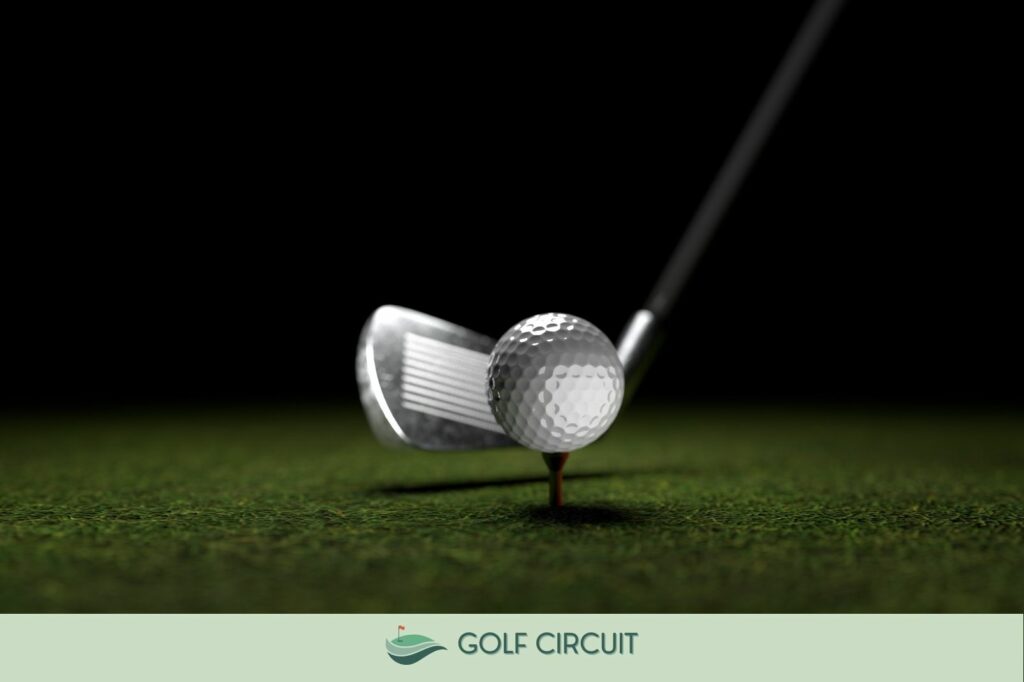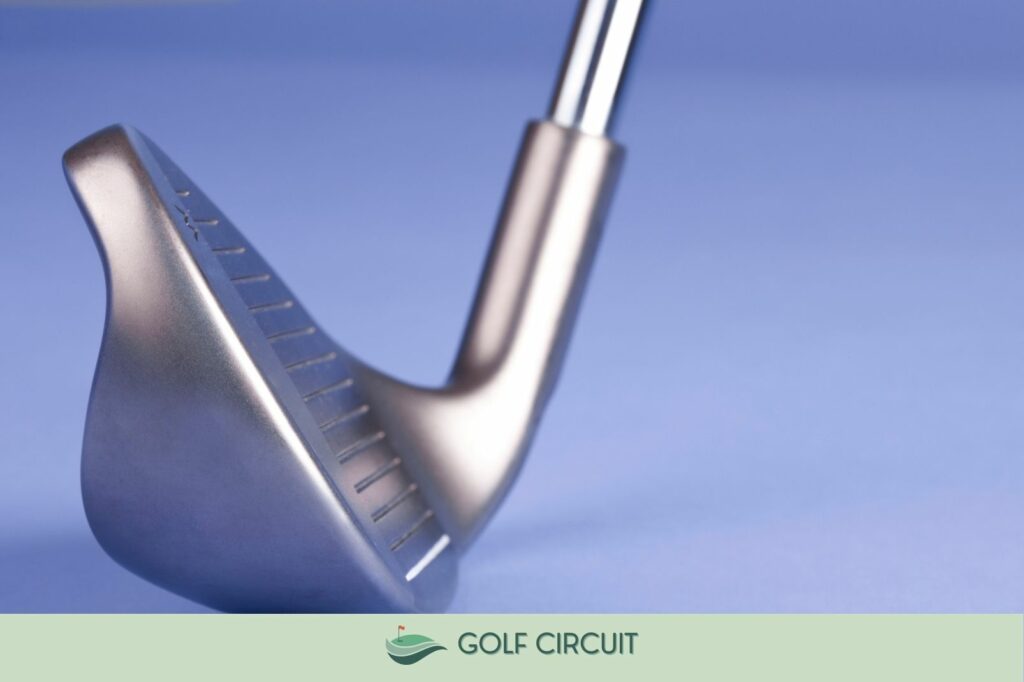Loft of Wedges Explained (Fine Tune Your Bag)

Most golfers have four wedges in their golf bags. This is a great thing to help you cover all the distance gaps, but there are also problems associated with having four wedges in the bag.
One of the most important issues that golfers run into is the loft of wedges and whether or not they are properly geared toward your golf game.
Golf wedges need to be separated by a few degrees in order to be effective in your game. Let’s take a look at the importance of the loft of wedges and what you can do to get yours fine-tuned to your needs.
Why Does Wedge Loft Matter?

The loft of your wedge will not only help with distance control, but it can also contribute to control and workability in the wedge shot. Wedges with lower lofts can travel further than those with higher lofts.
In addition, a golf wedge with a higher loft may stop faster on the green than those with a lower loft. I have also found that the loft of the wedge has a tremendous impact on total forgiveness and the lie that you can play it from.
Although golfers can manipulate the ball flight of the wedge, the loft is a factory setting that you cannot change.
What Are The Lofts Of Golf Wedges?
I wish I could tell you that a sand wedge would always be 56 degrees. Twenty years ago, this was pretty much the case.
However, things have changed quite a bit, and now wedge lofts vary considerably.
This has to do with the stronger lofts we are seeing in golf clubs and the way that impacts the total distance you can hit them. Here is a general guideline of what you can expect for the lofts of each wedge; just remember it will change from one manufacturer to another.
In general, pitching wedges have a loft of 42°-47°. Gap (or Approach) wedges have a loft of 47°-54°. Sand wedges have a loft of 52°-58°. Lob wedges have a loft of 58°-64°.
Pitching Wedge
The pitching wedge is the first wedge in the bag, and we are seeing some pitching wedges with only 42 degrees of loft, yet there are others with 47. The way to determine the best loft for your pitching wedge is to take a close look at the nine iron.
If the nine iron loft is within range of just a few degrees from the pitching wedge, that is good. Ideally, we would like to see about a four degree loft gap.
If you are playing with a set of game-improvement irons, it is often best to stick with a pitching wedge that matches the iron set. This will encourage more consistency throughout your golf clubs.
Gap Wedge or Approach Wedge
The gap or approach wedge is one of the most important in the bag. Many players find that this is about a 100 yard club for them; a distance you will find is quite important in the game.
The gap or approach wedge will likely range from 47 to 54 degrees. Again, the game improvement type sets will have the stronger gap wedges, as they are trying to ensure there is not too big of a gap from the pitching wedge to the sand wedge.
Some players choose a gap wedge that matches the irons; others will go with something that matches the wedges. Either choice is fine; you just have to ensure you are loft gapping properly.
Sand Wedge
The sand wedge has always been thought of as a stock 56 degree golf club. This is not the case anymore. Some sets have sand wedges with just 52 degrees, and other golfers may go with a 58 degree sand wedge.
The key with any sand wedge is to ensure that you have enough loft to get the ball out of the bunker. If a golf ball can’t get over the lip of a deep golf bunker, then it is likely not the best option for a sand wedge.
Of course, the sand wedge should be used around the greens for higher lofted chips and pitches, but the bottom line here is to make sure your sand wedge has enough loft.
Lob Wedge
Lob wedges usually fall between 58 and 64 degrees. The higher the loft of the lob wedges, the easier it is to get the ball flight you need.
Most golfers do not use their lob wedge for a full swing. Therefore it is not always necessary to worry about the loft gap between the lob and the sand wedge.
Instead, find a lob wedge that you are confident with, and if it happens to be more than 4 degrees different than the sand wedge, that should not present an issue.
5 Wedges: A Problem Amateur Golfers Should Be Aware Of

The world of golf has worked on developing this concept of golfers carrying four wedges for the last five to ten years. I like the concept; I can justify the need to carry four wedges.
However, golfers should be aware of a new trend in the concept that there need to be two wedges between the pitching wedge and the sand wedge. Of course, this is because the lofts are getting so strong, but it can get really confusing.
Let’s take a look at the Callaway Rogue ST Max Irons and their wedge lofts:
- PW- 41
- AW-46
- GW-51
- SW-56
Do you see how they snuck that other wedge between the pitching wedge and the gap?
At some point, it’s hard to say whether or not this is necessary, or we can all just agree that nobody needs to hit a pitching wedge 140 yards.
You can decide for yourself what the best set makeup is, but it’s important to understand that this is happening so you don’t get stuck having to take another club out of the bag just to accommodate your wedges.
Should I Change The Loft of My Wedges?
If you have determined that the loft of your wedges is not exactly what you need, then it is possible to have an experienced club fitter bend the loft for you. When you do this, you will usually want to make slight adjustments and nothing major.
Loft adjustments should be made if you have two wedges only two degrees or even three degrees apart. The best way to set up your golf wedges is to have at least four degrees of loft between them.
What Loft Should My Wedges Be?
The loft of your wedges will vary based on the type of player you are. Lower handicap golfers use blade style irons that do not have lower lofts in the same way that the higher handicappers often use.
If a lower handicapper is using a set of irons that have a 46 or 48 degree pitching wedge, it makes sense to follow up with 52 degree gap, 56 degree sand, and a 60 degree lob.
However, if you are playing with a game-improvement iron set and the pitching wedge is 44 degrees, then a 50 or 52 degree gap wedge, 54 degree sand, and 58 degree lob could be the best fit.
The key is to find a way to ensure you don’t have any noticeable uneven gaps between the wedges. A 44 degree pitching wedge and a 54 degree gap wedge are not great.
Try to decrease this gap, and you will have more luck with accuracy on the golf course.
Final Thoughts
At this point, you should understand the lofts of wedges in golf, why they are important, and have a better idea as to what yours should be.
Take a look at what you are carrying currently and take them out on the range to practice distance control.
If you notice a large gap between two of the wedges, it’s time to think about strategy and adjust. Wedges are very important when it comes to scoring, so be smart about what you choose.






